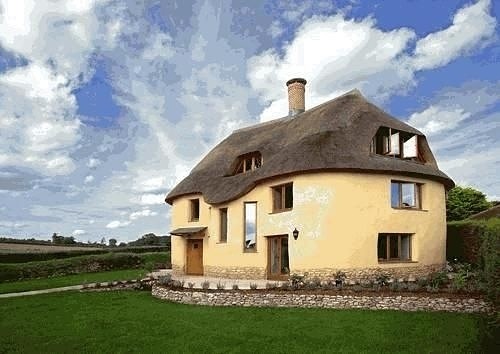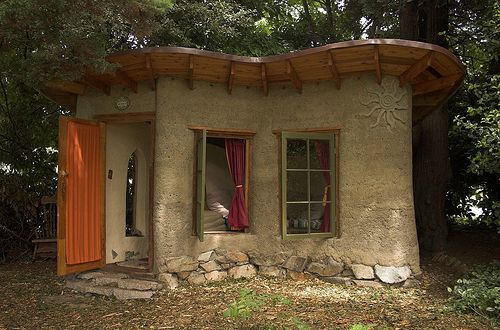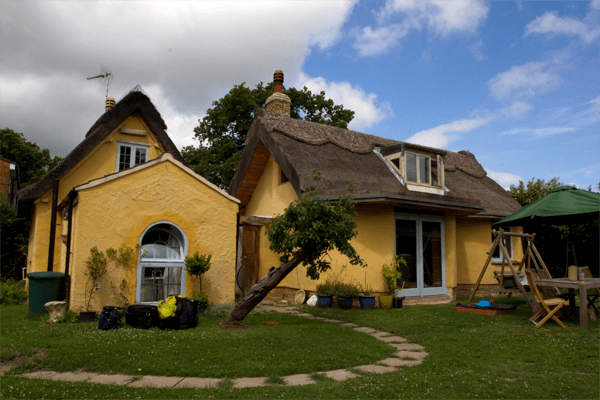Now, which construction technique will you adopt for your self-build? Trying to find a solution that’s easy on the environment as well as your bank account? Cob construction may well be the answer. Homes made with straw, clay and soil may seem to be out of date in today’s modern architectural world. But there are some surprising hidden benefits and contemporary uses for cob construction…
What is Cob?
Cob is a mixture of soil, clay, and straw. It is common for people to dance and jump on the materials to mix them together. Then the mixture is simply layered in the form of a house until it is dried. To make cob houses in England suitable for its particular climate, particular elements are added. This includes a gravel foundation and a stone or brick stem wall to keep the house off the ground.
History
Building homes with earth has been done since the beginning of time because of its widespread availability and versatility. According to networkearth.org, it was not up until the 13th century that cob homes were recorded to be used in Britain. In the late 15th century, cob houses became the norm in Britain and stayed that way until industrialization made it cheaper to transport brick and stone. Some older cob houses remain today have lasted over 10,000 years!
Advantages of Cob
Cob building is a very economical building material both financially and environmentally. This is because all of the materials used to build the home can be found locally, instead of having raw materials manufactured and transported to the building site. A three bedroom home could cost as little as £20,000 if you DIY.
A unique advantage homeowners get when they adopt cob building is artistic expression due to the fact that it is completely hand made. It is easy to add slopes or curves to any wall and you are not confined to the traditional building styles that we see today.
Cob houses create natural insulation and are very energy efficient. During the day the walls absorb the natural sunlight and store it until night, when the heat is released, this is due to its high thermal mass — meaning cob houses require little to no heating.
Little or no ecological footprint is left when it comes to building a cob home. The home is entirely recyclable and non-polluting, and for you the air in your home will be completely pollutant free. This is because cob is a porous material so air can pass freely through it keeping a healthy air circulation in your home at all times.
The wall are extremely strong and soundproof. They can even resist the impact of an earthquake, as well as being fire resistant. The straw, soil, and clay also repels unwanted pests like termites, rodents, and burrowing insects.
Disadvantages of Cob
As with all construction methods, there are also some disadvantages. Building times for cob houses has been known to be an issue for some homeowners. Due to the fact that each layer needs to be individually added and dried before the next layer can be added takes a long time, up to 15 months, according to this telegraph article. This also means that once the home is completed it takes several months for the home to shrink in size to be useable.
The wall thickness in cob homes are much larger than conventional homes meaning you will lose some square footage or you will need to plan for a larger footprint of your home.
There are very few skilled builders who specialize in using, constructing and repairing cob so it may be difficult to hire them. Building cob houses is very labor intensive and requires a lot of time and dedication. This can make or break your project if you are looking to build a larger and extravagant home. Cob homes are best suited for smaller families and couples.
Building regulations can also be difficult to meet. Most cob homes are not covered by building codes which means that in most urban and suburban areas it will could be extremely difficult to gain permission. You may need to involve a architect and a structural engineer to ensure permission is granted.
Finding the right architect
The key to a successful self-build is good research and planning and it’s wise to get your architect involved as early as possible to help with this. Choosing the right architect for your self-build is a critical first step, but we know that finding the right one can be a bit of a minefield. This is exactly why I set up this website in the first place! Register your project below and we’ll help you to find the right person for your project in no time…
Emily Design for Me
Follow Design for Me’s board New Build Ideas on Pinterest.




